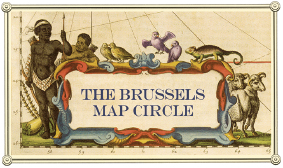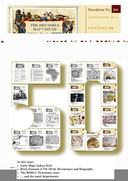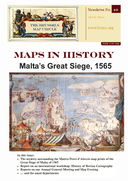The 26th International Conference on the History of Cartography (ICHC), Antwerp, Belgium - 12-17 July 2015
We are pleased to announce the start of the registration for ICHC 2015.
All you need to know to register.
Posted on

Posted on
Posted on
Session 1 - Military Cartography from the 18th-20th century
Session 2 - Military Cartography from the 18th-20th century (2)
Session 3 - World War I as a global conflict
Session 4 - World War I Cartography – Belgium
Session 5 - World War I Cartography – Britain
Session 6 - World War I Cartography – the Balkan States
Session 7 - World War I Cartography – Central Europe
Session 8 - Military Map Collections
Session 9 - The Influence of World War I on Later Cartography
Session 10 - Military Cartography from the 18th-20th century (3)
Posted on
Posted on
Posted on
Posted on

Posted on

Posted on
Dr Catherine Delano-Smith is a leading geographer and historian of cartography and has done a great deal over the course of more than thirty years to deepen and widen research in the history of cartography, within the UK and across the world, becoming a lynchpin of the cartography community.
Dr Delano-Smith was presented with the award in recognition of her contribution to the study of cartography by the Society’s President, Professor Iain Stewart.
Dr Delano-Smith has been one of the foremost activists behind the resurgence of the critical history of cartography, not only in her own works which have been many and influential, but also in her promotion of the International Society for the History of the Map (ISHMap), in her support of a bespoke and well-respected lecture series of lectures at the Warburg and, vitally, in her role as the editor of Imago Mundi, the world’s leading journal for the history of cartography.
She has taken an eclectic approach to researching early maps, covering prehistoric maps, map signs on early printed maps, and the relationship between maps and their users. She is particularly interested in the connection between the map image and social changes in learning and education.
The Bartholomew Globe has been awarded by the RSGS since 2000. The first recipient was John C. Bartholomew and awardees include the National Library of Scotland’s Chris Fleet and RSGS Collections and Information Convenor Margaret Wilkes. Notice by Fraser Shand of RSGS. With the help of Sarah Tyacke.
Posted on
Founder of the Malta Map Society (MMS) in 2009 and still its President, Albert Ganado has been involved in studies on Maltese history and cartography for many years. Several of his books have been reviewed in these columns, and in 2011 he was awarded the prestigious IMCoS-Helen Wallis Award. In November last year he was invested with an honorary degree of Doctor of Literature by the University of Malta in recognition of all his multifarious contributions to society. Following this year’s annual general meeting of the MMS on 8 March 2014 a special party was held to celebrate his 90th birthday. Sincere congratulations to Dr h.c. Albert Ganado, distinguished historian and map personality, and probably the oldest active President of any map society in the world.
Posted on